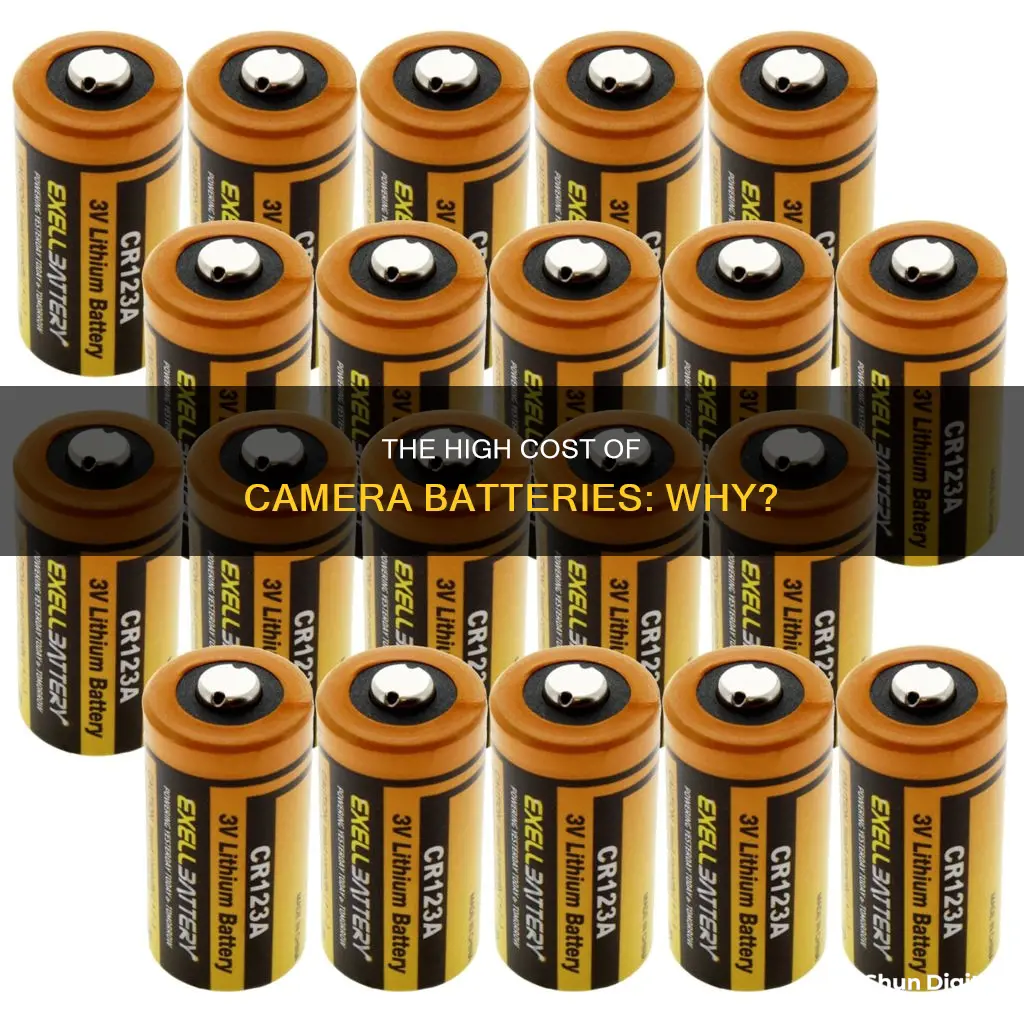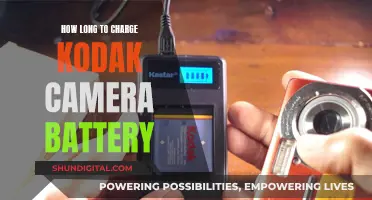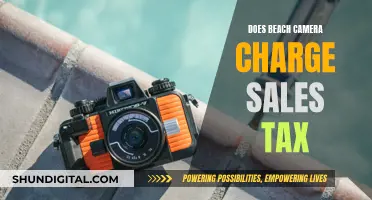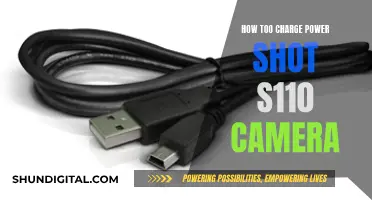
Camera batteries are expensive because they are considered a high-profit margin item. Camera companies can charge high prices for their batteries because consumers have the perception that only batteries with the camera brand logo on them are safe to use. However, there are cheaper third-party options available that are safe and reliable.
Third-party batteries are made by companies other than the camera manufacturer. They range from high-quality batteries made by reputable camera manufacturers to cheap knock-offs produced in factories with little to no safety standards or testing. While some people argue that third-party batteries are dangerous and can damage cameras or cause fires, others have had positive experiences with them, finding them to be a more affordable option that functions just as well as the original batteries.
It is important to be cautious when purchasing third-party batteries and to buy from reputable sources, as there are counterfeit and low-quality batteries on the market that may not perform as expected or may even be dangerous.
| Characteristics | Values |
|---|---|
| High profit margin | Camera companies can charge high prices for batteries because they are necessary and consumers are wary of using third-party options. |
| Wholesale manufacturing cost | The wholesale manufacturing cost of batteries is estimated to be between $2-$3 including packaging. |
| Alternative options | Third-party batteries are available at lower prices, but they may not work as expected or may damage the camera. |
| First-party batteries | First-party batteries are made by the camera manufacturer or a licensee they supervise and are designed to work with the camera. |
| Third-party batteries | Third-party batteries are made by companies other than the camera manufacturer and can range from high-quality to cheap knock-offs. |
| Price difference | Third-party batteries are almost always cheaper than first-party batteries. |
| Quality concerns | With third-party batteries, there is a risk of reduced quality due to cost-cutting in materials, testing, and design. |
| Performance | Third-party batteries may not hold as much charge, have a shorter lifespan, or have compatibility issues with the camera. |
| Safety | Batteries are dangerous and can pose a risk of explosion or damage to the camera if they are of poor quality. |
| Reputable third-party options | Some reputable third-party manufacturers offer batteries at lower prices without compromising on quality. |
What You'll Learn

Camera batteries are expensive because of the high profit margins
The high prices of camera batteries can be partly attributed to the perception that only batteries with the camera brand logo are safe and reliable. This allows camera companies to maintain their high prices, as customers are willing to pay more for peace of mind. Additionally, camera companies know that photographers value their equipment and are often willing to pay a premium to avoid any potential risk of damage from using third-party batteries.
However, it is important to note that there are reputable third-party manufacturers that produce high-quality batteries at a fraction of the cost of camera brand batteries. While there is a risk of poor performance or even damage with cheap, low-quality third-party batteries, many photographers have had positive experiences with reliable third-party options. It is crucial to do your research and buy from trusted sources to ensure the safety and compatibility of third-party batteries.
Travel Tips: Wrapping Camera Batteries for Safe Journeys
You may want to see also

Third-party batteries are cheaper but may be unreliable
Third-party batteries are often significantly cheaper than their first-party counterparts, but they may also be unreliable.
First-party batteries are those that come with your camera and are made by the manufacturer of the camera or a licensee they supervise. Third-party batteries, on the other hand, are made by companies outside of the original camera manufacturer and are also known as "off-brand" or "aftermarket" batteries.
The main advantage of third-party batteries is their affordability. Third-party batteries can be a quarter to three-quarters cheaper than first-party batteries. For example, the Nikon EN-EL18c, a first-party battery, costs $179, while a third-party alternative can be purchased for a third to a quarter of that price.
However, the lower price of third-party batteries often means lower quality. The manufacturers of first-party batteries have tight standards for capacity, discharging, and lifespan to ensure they match the advertised performance benchmarks. Third-party batteries, on the other hand, do not have standardized quality control, and their quality can vary wildly.
One common issue with third-party batteries is reduced power and longevity. Third-party batteries may have a lower Milliampere/hour (mAh) capacity, which can reduce how long you can operate the camera and its maximum frame rate. They may also deplete faster during use or have a shorter lifespan, resulting in rapid discharging over time.
Another potential issue with third-party batteries is compatibility. Not all batteries are backward compatible with older cameras, and some third-party batteries may not be recognized by the camera or may not recharge using the OEM battery charger that came with your camera.
In addition, there is a risk of purchasing a defective third-party battery, which could damage your camera or even explode. While this is rare, it is important to consider when deciding whether to purchase a third-party battery.
Overall, while third-party batteries can offer significant savings, they may also come with reliability issues and added risks. It is important to carefully research and vet third-party battery manufacturers and retailers to ensure you are getting a safe and compatible product.
Camera Battery Basics: What Photographers Need to Know
You may want to see also

Camera batteries are dangerous if they are faulty
Third-party batteries are almost always cheaper than original batteries, but the money has to be saved somewhere. It definitely doesn't cost the original manufacturer $60 to make a battery, but it costs them a fraction of that. Good third-party manufacturers deliberately make less profit to undercut the original manufacturer. Bad manufacturers, however, will just cut costs from materials, testing, design, and other places that reduce the overall quality of the battery.
In the worst-case scenario, a faulty battery could damage your camera. It might not work as expected, or it may not hold as much charge, won't last as long, or might feel a bit plasticky. There's also a chance you might end up with a dud that won't work at all or won't charge with the official charger.
To avoid faulty batteries, it's best to buy from a local camera shop or a high-quality, dedicated online photo store. While it may be tempting to buy cheap third-party batteries, it's important to remember that you get what you pay for. By choosing a reputable manufacturer, you can minimize the risk of purchasing a faulty battery.
Additionally, it's important to properly care for your camera batteries to avoid any potential dangers. Keep them away from strong magnetic fields and sudden changes in temperature. Don't leave them in the camera for extended periods, especially in very humid environments, as this can cause condensation and damage the internal mechanism. Store them in a cool, dry place, and regularly check and charge them to maintain their performance.
Choosing the Right Volt Adapter for In-Car Camera Battery Charging
You may want to see also

It's important to buy batteries from a reliable source
Camera batteries are expensive because they are a high-profit margin item for camera companies. They can keep prices high because consumers are often wary of buying third-party batteries, fearing that they will damage their device.
However, it is important to remember that not all third-party batteries are bad. If you want to save money, it is worth considering buying from a reputable third-party manufacturer, as long as you buy from a reliable source.
First of all, it is important to avoid buying from certain websites, such as Amazon, which has a problem with scams and counterfeits. Instead, buy from a specialist photography store, either local or online. This way, you can be more confident that the product has been ordered by someone who knows about cameras.
When it comes to the manufacturer, it is worth paying a little extra for a high-quality product. Very cheap batteries are more likely to be made with low-quality materials and inadequate testing. A good third-party manufacturer will deliberately make less profit so that they can undercut the original manufacturer, without compromising on quality.
Look for third-party batteries that come with a warranty. This shows that the manufacturer stands behind its product. For example, BM Premium offers a one-year warranty and safety guarantee on its batteries.
Finally, check reviews from other photographers. This will give you an idea of how the battery performs in the real world and help you avoid duds that don't work or damage your camera.
In summary, it is possible to save money by buying third-party camera batteries, as long as you buy from a reliable source.
Best Batteries for Your XSH Camera Doorbell
You may want to see also

Camera companies often upgrade their batteries to add more power
Camera batteries are expensive because they are considered a high-profit item. Camera companies can charge high prices for their batteries because consumers need them, and they are often willing to pay high prices for the peace of mind of using an official product.
Another reason for the high cost of camera batteries is that they are designed to work specifically with a particular camera model. This means that camera companies can charge a premium for their batteries, as consumers are often willing to pay more for a battery that is guaranteed to be compatible with their camera.
In addition, camera batteries are typically made by a third-party company that specializes in battery manufacturing. These companies may charge a higher price for their batteries due to the cost of research, development, and manufacturing.
Furthermore, camera batteries are often upgraded by camera companies to add more power or improve performance. This means that older batteries may become obsolete, and consumers may need to purchase new batteries to keep their cameras functioning properly.
Lastly, it's important to note that there are also generic or third-party camera batteries available on the market. These batteries are usually cheaper than official camera company batteries, but they may not offer the same performance, quality, or compatibility. It's essential to do your research and buy from a reputable source when considering third-party camera batteries.
How SpyPoint Cameras Behave With Low Battery
You may want to see also
Frequently asked questions
Camera batteries are expensive because they are considered a high-profit margin item for camera companies. Camera companies can charge a premium for their batteries because consumers believe that only their branded batteries are safe to use and will not damage their equipment.
In general, yes, it is safe to use third-party or generic-brand camera batteries. However, it is important to purchase them from reputable sellers and manufacturers to ensure quality and safety.
The main risk of using third-party camera batteries is the potential for reduced performance and shorter battery life compared to original equipment manufacturer (OEM) batteries. In some cases, third-party batteries may not be fully compatible with your camera, leading to errors or other issues.
Yes, the most significant benefit of using third-party camera batteries is the cost savings. Third-party batteries are typically much cheaper than OEM batteries, sometimes costing a quarter to half the price. This can be especially advantageous when you need multiple backup batteries.
When choosing a third-party camera battery, look for reputable manufacturers and sellers. Check reviews from other photographers to gauge their experiences with specific brands and models. Ensure the battery is compatible with your camera model to avoid errors and performance issues.







